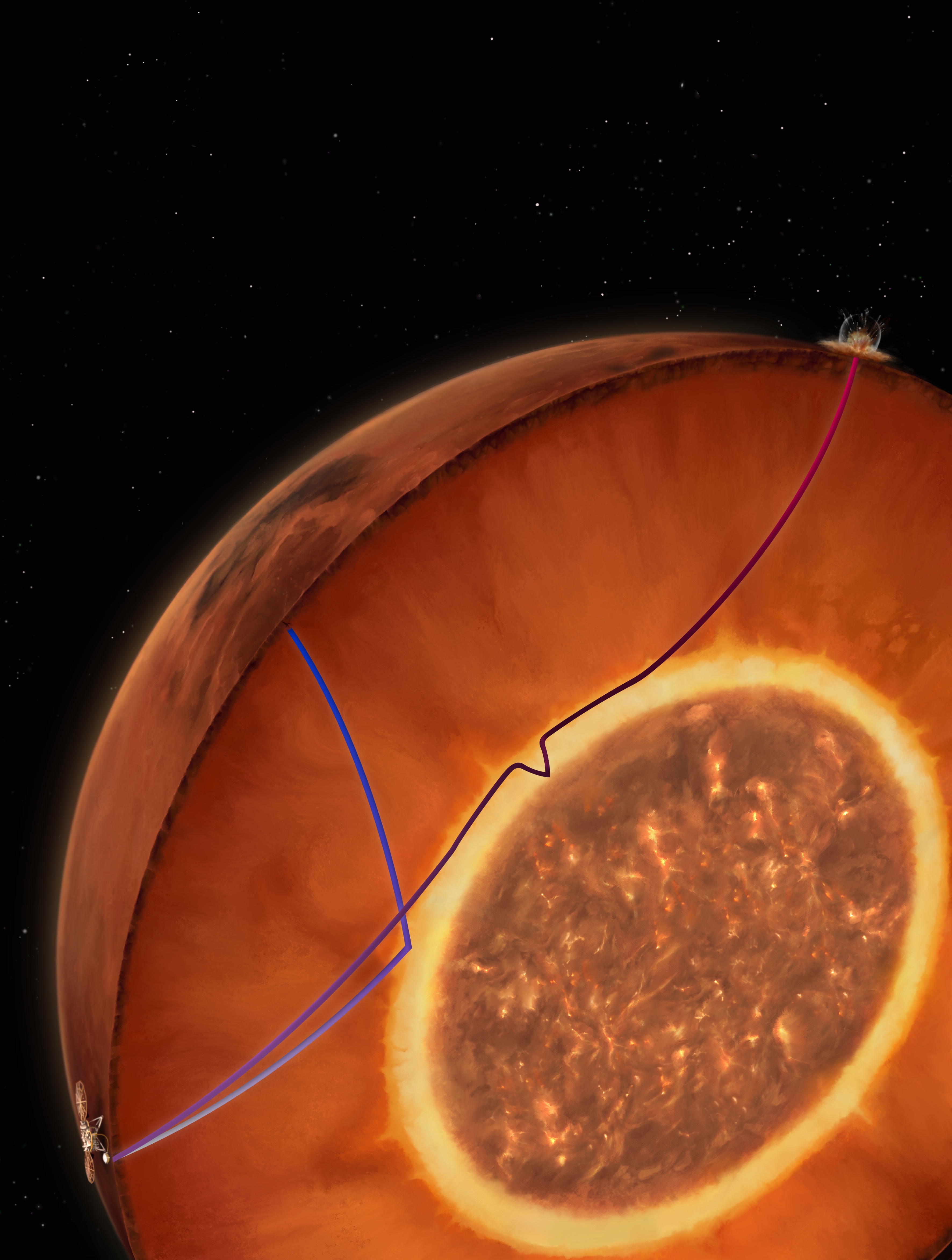Having NASA’s InSight on Mars has delivered a completely new understanding of what the Red Planet is like. Its seismometer used quakes as sonograms to study the interior of Mars. Initial data from weak close-by quakes suggested a preliminary, but incorrect, picture. Mars was believed to have a larger and less dense core. New data challenges this scenario.
The crucial data comes from quakes produced by a meteorite impact. The seismic wave propagated through the interior of the planet all the way to the core, which does not match the previous scenario. In the original idea, Mars had a solidified mantle and a liquid core with a radius of 1,830 kilometers (1,137 miles). Weaker seismic waves would reflect at that distance, suggesting that to be the size of the core.
However, researchers couldn’t exactly square that size with its density. The general idea in rocky planets is that they are differentiated, so the heavier elements sink to the bottom. To explain the density of the core there was a need to have a lot of lighter elements, and there are simply not enough light elements available to form such a core. Also, the motion of the Martian moon Phobos seemed to imply that part of the mantle was molten.

Artist’s view of the quakes seen by InSight from nearer regions and from a meteor impact.
Image courtesy of Dr Henri Samuel, copyright IPGP-CNES
When theories and observations clash, one thing to do is get more data. And the meteorite quake provided exactly that. The event triggered waves that could propagate through the deeper layers. If the mantle was solid and had the same composition throughout, the motion of these waves could not be explained.
The two research studies covering this new discovery agree that the mantle has a bottom layer that is not solid, with a thickness of about 150 kilometers (93 miles). Underneath that, there’s the Mars core, a molten ball of mostly iron with a radius of 1,680 kilometers (1,044 miles).
“We couldn’t fit the travel times that we saw going from the other side of the planet almost, then it suggested to us, okay, there’s maybe something else going on,” Professor Paolo Sossi, co-author of one of the studies from ETH Zürich, told IFLScience
“The best way that we could see to fit that was to have a low-density layer on the top of the core. This is the major step forward: with this low-density layer we now have a denser core, which is easier to explain,” Professor Sossi continued.
“Contrary to what we thought before, the Martian mantle is not homogeneous. It has these different units. And the core underneath it, which is made out of metal and light elements, is smaller, about 30% smaller in volume than the previous estimates,” lead author of the second study Dr Henri Samuel, of the Institut de Physique du Globe de Paris and Université Paris Cité, told IFLScience.
Both research teams highlighted how the possibility of a smaller core and a not-fully-solid mantle was being investigated long before the data that backed it up came in. Our understanding of Mars is now better, but it is still far from perfect. Even these two studies don’t fully agree on what goes on deep into the mantle.
In the work by Dr Samuel, there are two layers in the deep mantle, a partially molten one and a fully molten one. The other study team instead believes that the whole layer is molten. Future analysis of what has been recorded by InSight and better models could maybe distinguish between these two scenarios, but more data is needed.
And InSight is no longer functioning, turning off after far exceeding mission expectations, so for more Marsquake detections we will have to wait for future missions.
Both studies are published in the journal Nature, and are available here and here.
Source Link: Meteorite Quake Reveals Mars's Core Is Smaller And Denser Than Thought